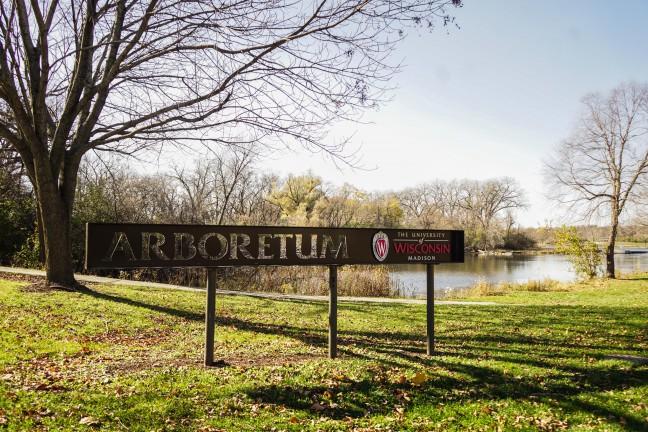Though it may not feel as if spring has sprung, the University of Wisconsin Arboretum is well underway in preparing for the warmer months ahead.
To do so, the Arboretum follows an annual cycle where landcare and community activities change with the seasons, director Karen Oberhauser said. Right now, the Arboretum is undergoing controlled burns, a process essential to new growth in the prairie.
“[Controlled burns] really serve a lot of purposes,” Oberhauser said. “[They] help keep out shrubs and trees that would move in … and also provide bare ground for seeding which makes plants grow more lushly.”
According to the Arboretum website, native prairies, oak savannas and oak woodlands rely on these burns for new, healthy growth, and the burns conducted by the fire crew are done to mimic the ones that occur naturally in the wild. Many precautions are taken to ensure the burns are done safely, and the safety of the fire crew and visitors are of top priority.
Despite the harsh winter experienced in Wisconsin this year, where temperatures and wind chill hit well below zero, Landcare Manager Michael Hansen said the brutal weather was not as harmful to the Arboretum as some may think.
Hansen said the low temperatures froze the ground, which actually helped his team in getting necessary work done on the Arboretum. After the polar vortex when it snowed again, he said a buffer was created from the frozen ground and snow that actually protected the wildlife.
“The conditions were really good for working on invasive trees and shrubs,” Hansen said. “We didn’t have to worry about trampling plants.”
Though the Arboretum has bounced back after the severe winter weather, the vegetation native to the arboretum is not yet used to the winters caused by the changing climate, Oberhauser said. The native plants have not evolved to fully deal with winters that get cold, then warm and then cold again, she said.
To this end, Oberhauser said the Arboretum is looking into the effects of freeze-thaw cycles commonly happening during Wisconsin winters.
Hansen said the rain in late winter before the land had fully thawed likely had the biggest effect on the Arboretum. Because the water had nowhere to go, the Arboretum suffered some erosion damage, he said.
The Arboretum is home to one of the oldest restored prairies in the world, Oberhauser said, and while the land was once used for farming, the Arboretum’s goal is to fully restore the land back to what was there before.
“Our goal is to make [the prairies] as self-sustaining as possible,” Oberhauser said.
Another part of preparing for springtime involves getting ready for activities and programs hosted by the Arboretum, Oberhauser said. Education and outreach, helping people learn about the environment and programs for children and family groups are all areas the Arboretum is gearing up for, she said.
Being a space for not only UW students and staff to enjoy but also for the greater Madison area is representative of partnership between the university and the city. She said the space was formed when a committee from the city of Madison approached the board of regents in hopes of creating a place of respite. Now, the 1,200 acres are enjoyed by all.
“I think that it serves that role for a lot of university students,” Oberhauser said. “We hear from students that the Arboretum is a place to go to get away from campus.”
Another key function of the Arboretum is the research and work experience it allows. Oberhauser said the Arboretum is a research center within the structure of the university where research into restoration is conducted and questions about how the natural world works are answered. She said many UW students are involved in the native plant gardens and help with research projects through the university.
As the Arboretum is located centrally in Madison, Hansen stressed the importance of the land to the city community despite it historically being used for research.
“I would say it is a resource for everybody to use in a variety of ways,” Hansen said.


